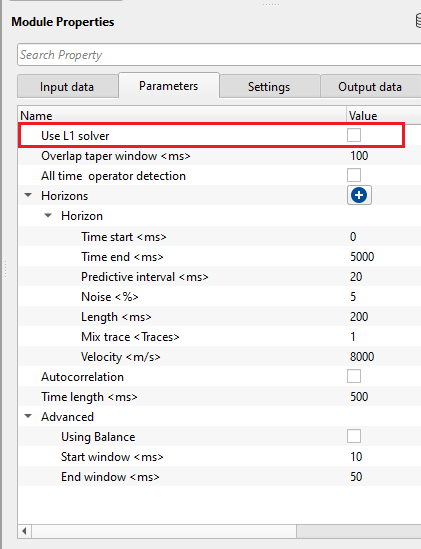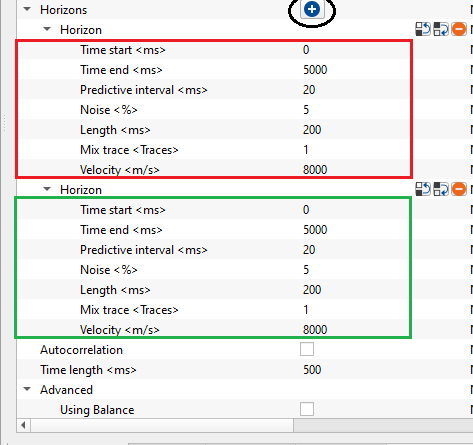Attenuating reverberations, multiples using Predictive Deconvolution
![]()
![]()
When the seismic sources are fired in the field (onshore/offshore), the energy travels through the sub-surface of the Earth. During the process it loses the energy. Seismic source transmits the energy through the Earth and the Earth acts as a filter.
The recorded seismic signal is convolved with the Earth's impulse response and due to this the signal gets distorted. Deconvolution is a process where it tries to restores the original seismic signal by designing a prediction filter. Deconvolution is used to attenuate/remove the multiples. Deconvolution is useful to increase the signal to noise ratio by increasing the signal's later and temporal resolution. It improves the signal response by attenuating the distortions caused by the Earth's impulse response.
This module performs trace by trace predictive minimum phase deconvolution. Deconvolution analysis windows are designed within the module. The predictive deconvolution operators are calculated and applied using a Wiener-Levinson algorithm. This algorithm
This algorithm computes the prediction filter that models the relationship between a trace and its previous values. This filter can be used to predict the future values of the signal based on past observations, which allows for the removal of the convolutional distortions by subtracting the predicted values from the observed data. This algorithm uses auto-correlation matrix of the seismic data which finds the correlation of the seismic trace at different time intervals or time samples. This auto-correlation matrix then used to find the filter coefficients that minimizes the prediction error in an iterative method. Once the prediction filter is computed, this filter is applied on the seismic data to remove/attenuate the multiples, reverberations or distortions of the data and improve the overall signal to noise ratio.
![]()
![]()
Input DataItem
Input gather - connect/reference to the output gather. In case of the prestack data, the input gather can be either of a common shot/common receiver/common mid point gather.
![]()
![]()
Use L1 solver - By default, FALSE (Unchecked). L1 solver is used for L1 norm minimization. L1 norm is sum of absolute values of the coefficients (prediction filter coefficients) and used for sparse signal reconstruction.
L1Solver - true - When the user checks this option, the user should provide the L1 solver iterations and Sparsity damping values.
Number of L1 solver iterations - specify the total number of iterations to be performed. By default, 100.
Sparsity damping - It is a regularization parameter that is used to control the sparsity of the solution. If the sparsity damping is too low, we introduce too many elements into the prediction filter which is filled with too much noise components. If the sparsity damping value is too high, it will remove the smaller details like weak reflectors and making the filtering effect less effective.
Overlap taper window - This is used in combination with the Horizons. If there are multiple horizons (multi window deconvolution), then this parameter controls the overlapping of the windows by applying a taper value.
All time operator detection - This parameter related to the calculation of the auto-correlation matrix used by Wiener-Levinson algorithm. If this option is TRUE (checked), it will consider the entire trace length for auto-correlation matrix calculation. If this FALSE (unchecked), it will take the horizon window values defined by the user i.e. time start and time end parameters.
Horizons - This section deals with the application of the deconvolution. Horizons are nothing but the windows. If the user wants to apply the deconvolution on multiple windows, the user should click on  icon and it will add additional horizon.
icon and it will add additional horizon.
Horizon - Define the deconvolution window parameters.
Time start - Analysis window start time
Time end - Analysis window end time
Predictive interval - predictive deconvolution time interval used to remove multiple contamination
Noise - pre-whitening parameter for spectrum stabilization
Length - deconvolution operator length
Mix trace - traces summed into one average trace after the algorithm computes more stable deconvolution operators
Velocity - this velocity used in order to Mute Up the data before calculation of convolution operator – usually to avoid first arrivals to be considered for deconvolution
Autocorrelation - auto-correlation is performed by the user defined time length parameter. This helps in understanding the deconvolution prediction gap and lengths.
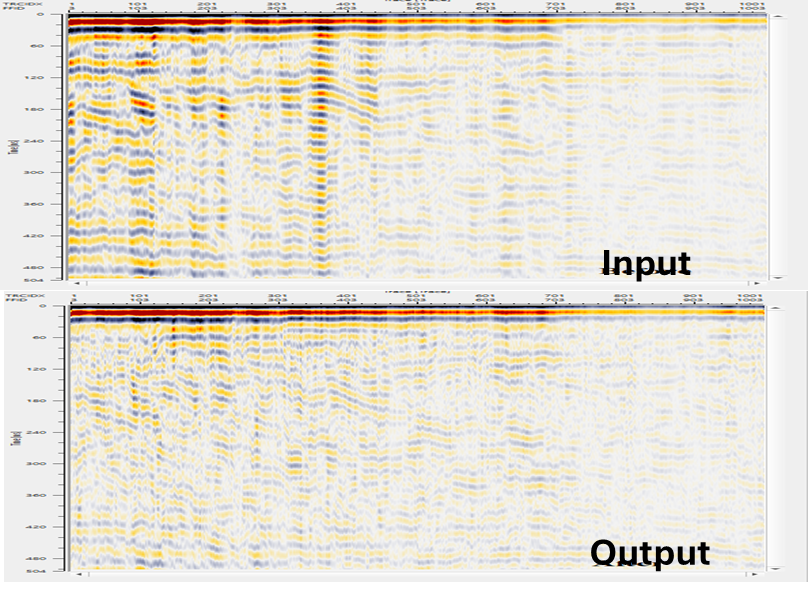
Time length - provide the auto-correlation length to be considered for the calculation
Advanced - This section deals with the balance.
Using Balance - by default, FALSE (Unchecked). This option allows the user to apply balance to the output.
Start window - specify the starting window
End window - specify the ending window for applying the balance.
![]()
![]()
Auto-connection - By default, TRUE(Checked).It will automatically connects to the next module. To avoid auto-connect, the user should uncheck this option.
Bad data values option { Fix, Notify, Continue } - This is applicable whenever there is a bad value or NaN (Not a Number) in the data. By default, Notify. While testing, it is good to opt as Notify option. Once we understand the root cause of it, the user can either choose the option Fix or Continue. In this way, the job won't stop/fail during the production.
Notify - It will notify the issue if there are any bad values or NaN. This is halt the workflow execution.
Fix - It will fix the bad values and continue executing the workflow.
Continue - This option will continue the execution of the workflow however if there are any bad values or NaN, it won't fix it.
Calculate difference - This option creates the difference display gather between input and output gathers. By default Unchecked. To create a difference, check the option.
Number of threads - One less than total no of nodes/threads to execute a job in multi-thread mode.
Skip - By default, FALSE(Unchecked). This option helps to bypass the module from the workflow.
![]()
![]()
Output DataItem
Output gather - generates the output after predictive deconvolution which is multiple/reverberations free dataset.
Gather of difference - outputs the difference before and after predictive deconvolution.
Autocorrelation input - outputs the auto-correlation input for visual QC purpose.
Autocorrelation output - outputs the auto-correlation output for visual QC purpose.
This modules doesn't have any information available so the user can ignore it.
![]()
![]()
In this example workflow, we've added "Decon predictive" module inside Seismic loop module.
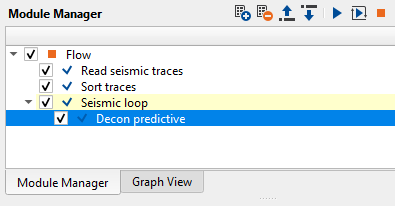
Decon predictive module generates the Input, Output and Difference displays. Besides, it generates Auto-correlation displays.

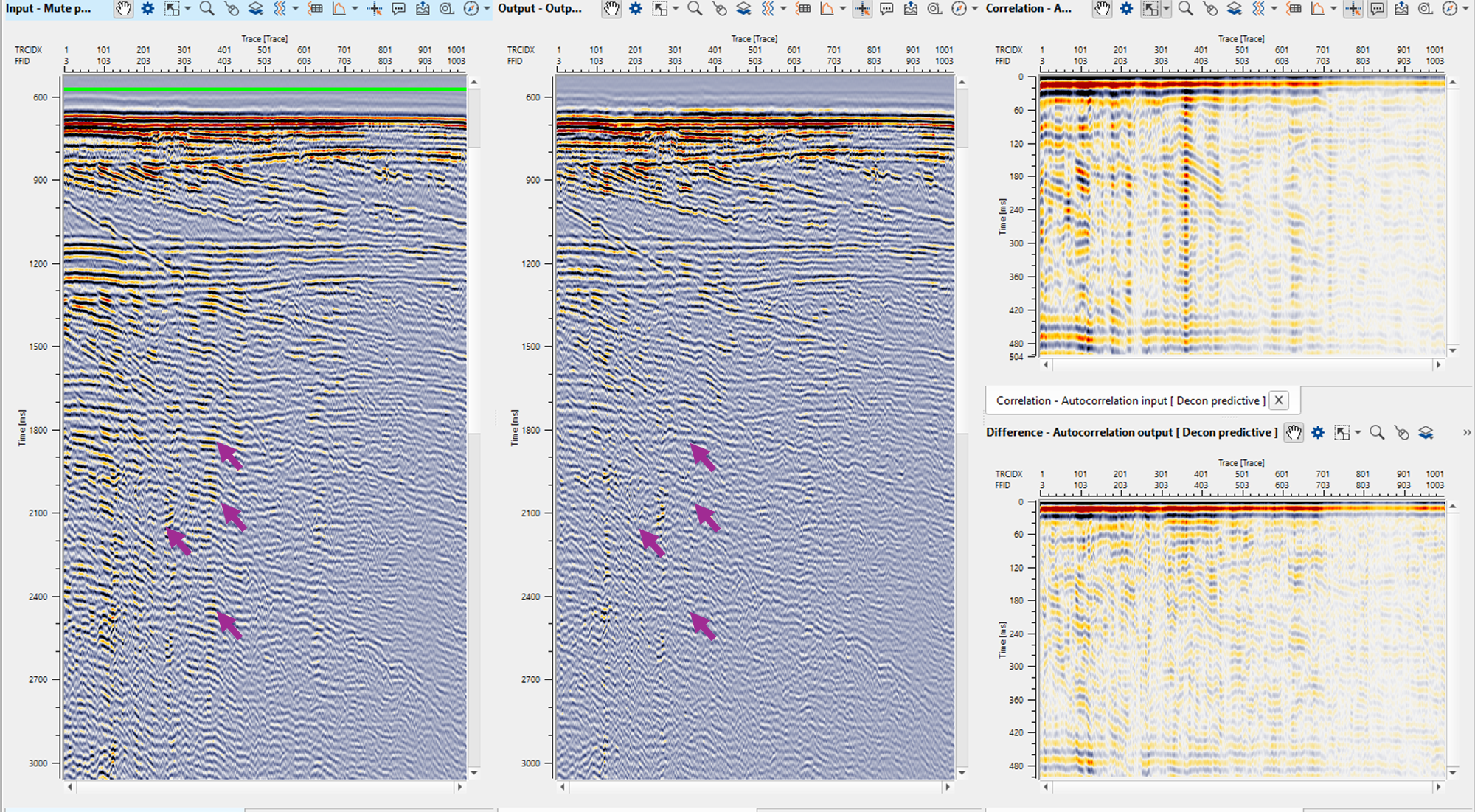
![]()
![]()
This modules doesn't have any action items so the user can ignore it.
![]()
![]()
YouTube video lesson, click here to open [VIDEO IN PROCESS...]
![]()
![]()
Yilmaz. O., 1987, Seismic data processing: Society of Exploration Geophysicist
 * * * If you have any questions, please send an e-mail to: support@geomage.com * * *
* * * If you have any questions, please send an e-mail to: support@geomage.com * * *
